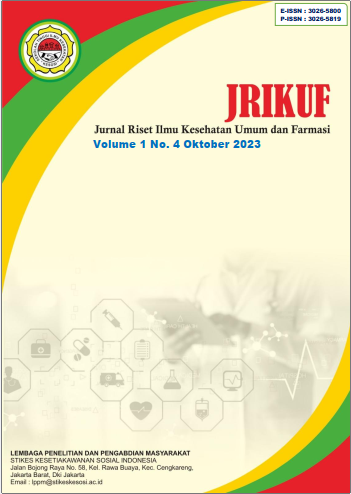Sistem Informasi dan Pelayanan Kasus Emergency Menghadapi Kuliah Offline Pasca Pandemi Covid-19
DOI:
https://doi.org/10.57213/jrikuf.v1i4.65Keywords:
Emergency cases, campus services, information systemsAbstract
Campus is a potential place to become the epicenter of Covid-19 transmission from students, lecturers, employees and the general public. This paper aims to formulate and design problem solutions to guide information systems and emergency case services, including Covid-19. This paper is a qualitative approach through deepening emergency theory including Covid-19 cases, objective conditions of campus life based on patient safety principles, especially acute disease attacks (heart attacks, strokes and accidents, disasters) including Covid-19 cases with a new variant whose virulence is said to be more dangerous, faster and more deadly without any signs and symptoms. Hence, it requires emergency services so as not to cause casualties, disability or even death. The results of the research show that the campus does not yet have an information system and service mechanism if an emergency case occurs at any time. The model for formulating information system design and emergency case services in the campus environment is (1) establishment and management arrangement of the information system management unit for disaster services and emergency cases; (2) Preparing an information system program (3) Preparing Standard Operating Procedures for disaster and emergency case service systems and (4) Preparing human resources for unit management.
References
Amani, R., & Sharifii, N. (2012). Cardiovascular Disease Risk Factors. The Cardiovascular System Physiology, Diagnostics and Clinical Implications, 279–310. https://doi.org/10.3109/9781420047981-16
Baransyah, L., Rohman, M. S., & Suharsono, T. (2014). Faktor-Faktor yang Berpengaruh terhadap Kejadian Gagal Jantung pada Pasien Infark Miokard Akut di Rumah Sakit dr. Saiful Anwar Malang. Majalah Kesehatan FKUB, 1(4), 209–213.
Bianto, M. A., Kusrini, & Sudarmawan. (2019). Perancangan Sistem Klasifikasi Penyakit Jantung Mengunakan Naïve Bayes. Citec Journal, 6(1), 75–83. https://doi.org/10.24076/citec.2019v6i1.231
Centers for Disease Control and Prevention. Stroke Risk [Internet]. 2017 [cited 2022 Jan 14]. Available from: https:/ /www.cdc.gov/stroke/risk_factors.htm
Direktorat P2PTM Kemenkes RI. Pedoman Pengendalian Stroke Tahun 2013 [Internet]. 2016 [cited 2022 Jan 12]. Available from: http://p2ptm.kemkes.go.id/dokumen-ptm/ pedoman-pengendalian-stroke
Direktorat P2PTM Kemenkes RI. Germas Cegah Stroke [Internet]. 2017 [cited 2022 Jan 11]. Available from: http:// p2ptm.kemkes.go.id/artikel-sehat/germas-cegah-stroke
Ghani, L., Susilawati, , & Novriani, H. (2016). Faktor Risiko Dominan Penyakit Jantung Koroner di Indonesia. Buletin Penelitian Kesehatan, 44(3), 153–164. https://doi.org/10.22435/bpk.v44i3.5436.153-164
Kurniawan, D., Ibrahim, K., & Prawesti, A. (2015). Pengalaman Pasien Mengalami Serangan Jantung Pertama Kali yang dirawat di Ruang CICU. Jurnal Keperawatan Padjadjaran, 3(2), 67–76. https://doi.org/10.24198/jkp.v3n2.2
Lakhsmi, B. S., & Herianto, F. (2018). Komunikasi Informasi Edukasi Penyakit Jantung Pada Remaja Obesitas. Jurnal SOLMA, 7(1), 50–57. https://doi.org/10.29405/solma.v7i1.665
PERKI. (2015). Pedoman Tatalaksana Sindrom Koroner Akut. In Perhimpunan Dokter Spesialis Kardiovaskular Indonesia (Ketiga).






